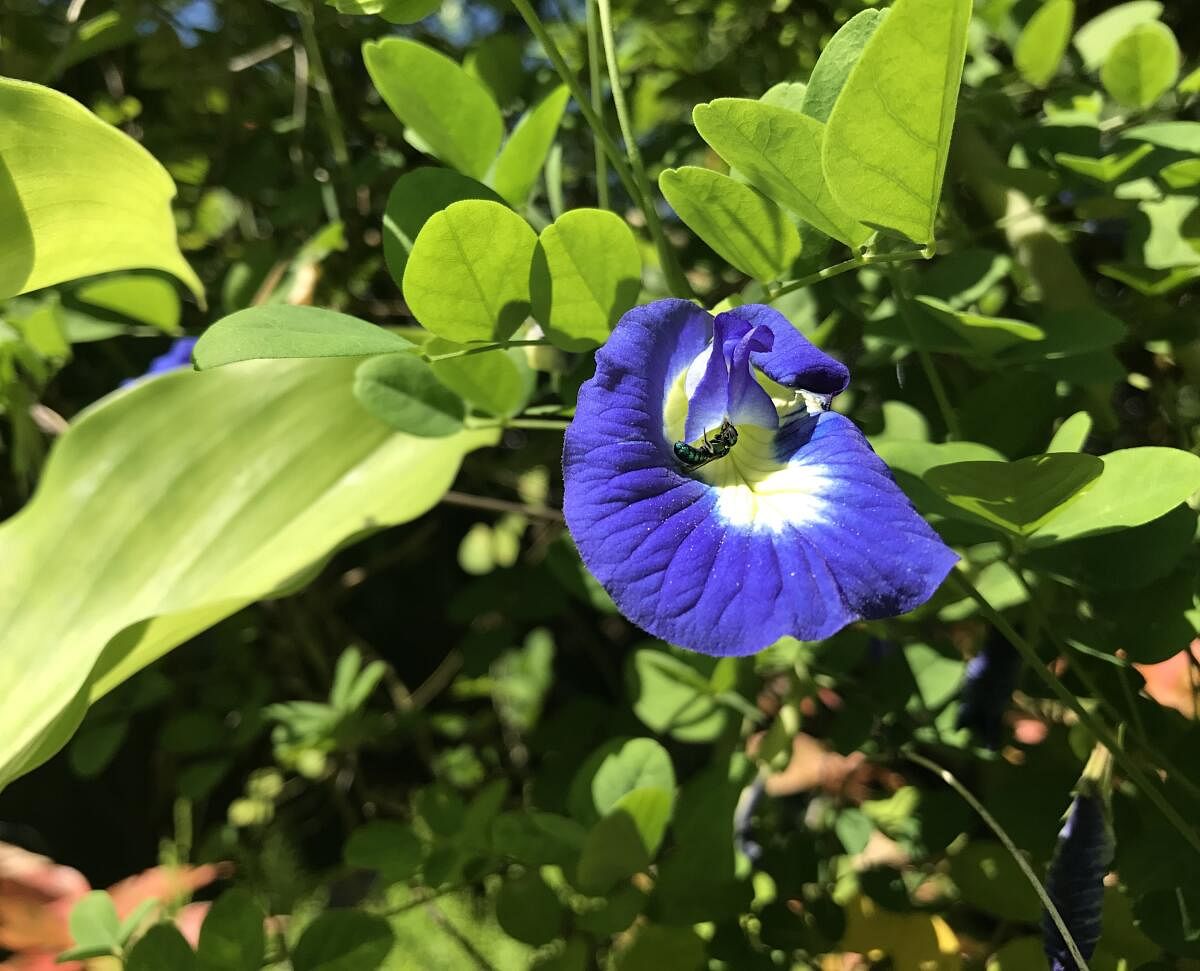
My dear reader, in this three-part series, we’ve until now highlighted eight floral species that are apt for both open gardens and balconies.
The first part introduced you to Hibiscus, Jasmine, Heliconia, and Dahlia. These plants provide a broad spectrum of colours and shapes, promising a constant rotation of visual spectacle all year round. We featured Rose, Glory Bower, Gandharaj and Sugandaraj in the second part, all of which add a sensual layer with their wonderful smells.
In this concluding part, we would like to suggest four climbers that will offer an additional dimension to your landscape. Climbers are more than simply plants; they are nature’s skilful artists, expertly weaving beautiful layers of greenery and blossoms, bringing life to the landscape in ways that no other plant can.
The climbers recommended today thread around a supporting structure and can thus be shaped to fit your landscape. The most basic climber you can grow is Clitoria ternatea, commonly known as Butterfly Pea or Sangu Pushpa in Kannada. It is a perennial climbing vine with beautiful blue or white blossoms. The flowers also bloom in shades of lavender and pink, with multilayered variations available in all shades.
When the blue blooms are steeped, they produce a blue decoction that is used to brew tea. When lime juice is added, the blue decoction turns pink, making it an appealing game for children. New plants sprout from disseminated seeds, and once you have this climber in your garden, there is no stopping it.
Thunbergia mysorensis, popularly known as the Mysore trumpet vine or Indian clock
vine, is a beautiful evergreen climbing vine endemic to southern India. It is valued for
its tall, pendulous racemes of golden and reddish-brown blooms, which make a stunning display in any garden. It is commonly cultivated horizontally on pergolas with the racemes hanging down to create a very elegant look.
You may train it across
the width of your balcony to create the same charm. The hanging racemes remind me of colourful pasta drying in the sun. The flowers attract nectar-eating birds such as flowerpeckers and sunbirds. It’s an amazing sight to watch sunbirds hover to devour nectar. For best growth and blooming, the vine requires at least six hours of direct
sunlight per day. It grows best in well-drained, fertile soil rich in organic matter.
The bougainvillaea is a popular climber that captures the hearts of all nature enthusiasts. It is a colourful, flowering vine that produces cascades of dazzling, paperlike blossoms in pink, crimson, orange, white, and purple. Bougainvillaea prefers well-drained soil. Once established, the plant is fairly drought tolerant, requiring deep but infrequent watering. It is the most popular vine for decorating a house’s entryway since it grows well on arches and walkways.
Hoya plants, commonly known as wax plants, hold a special place in my heart. With their thick, waxy leaves and magnificent clusters of star-shaped flowers, these one-of-a-kind beauties delight my yard. The most intriguing characteristic of Hoya plants is the tendency to bloom from the same node year after year. As a result, I don’t cut the long, wasted flower stems after they’ve bloomed. This climber may also be cultivated
in indirect sunlight and is a real eye-catcher indoors.
Over this three-part series, we’ve journeyed through 12 delightful flowers and foliage, united by their ability to enchant us with their hues and evocative fragrances. It’s my hope that these shared botanical tales and cultivation tips have sparked inspiration and curiosity.
Motley Garden is your monthly kaleidoscopic view into a sustainable garden ecosystem.
The author believes that gardening is not just about plants and how to nurture them. It is also about bees, butterflies, insects, flies, and bugs that make it their home. She is on social media as @neelavanam